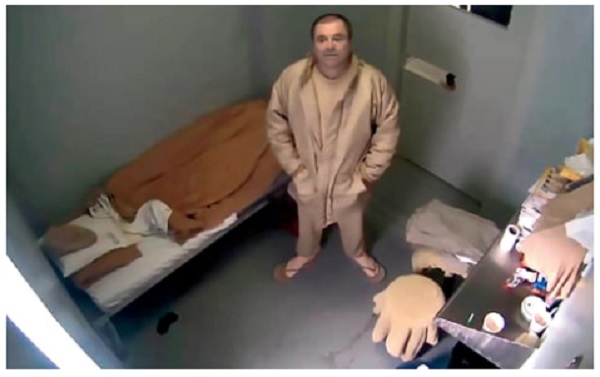Paul Solotaroff from RollingStone takes us inside the hunt for Mexico’s most notorious kingpin and druglord of all times, how he reigned for three decades, but couldn’t stay on top forever.
Rush hour starts early on Heroin Highway, generally by 6 a.m. Hockey dads in sport-utes; high school teens in car pools; commodities brokers and pensioners making their early-morning runs into Chicago on I-290.
The Eisenhower Expressway – the Ike, as locals call it – is a straight shot in from the western suburbs to the mob-deep blocks of West Chicago. So Gangster Disciples and Vice Lords are up with the sun to pitch their work to the early birds, hugging the corners under the Ike’s offramps to do much of their day’s business by 8 a.m.
Since cheap, potent heroin flooded Chicago 10 years ago and addicted a bell-cow demographic – middle-class whites – those corners off the Ike have become bull markets for gangs strong enough to hold them down. “They serve you in your car, quick-out in under a minute, and you’re back home in Hinsdale before the kids wake,” says Jack Riley, the ex-special agent in charge of the Chicago office of the Drug Enforcement Administration. “That’s why gangsters kill for those corners. They’re the Park Place and Boardwalk of the drug game.”
Riley, the town’s most famous federal agent since the days of the Untouchables, put together a strike force that jailed the major kingpins and left the gangs rudderless and scrambling. “We knocked down the big guys – the suppliers and OGs – but the young ones started killing their way up. That’s what happens when you get your targets: The gangsters don’t know who they work for.” Actually, even before his strike force rolled up the leaders, no one here knew who they really worked for. Riley estimates that Mob City has 150,000 gangsters in residence – and though most are in endless wars with one another, they’ve all blindly served the same master for 10 years: Joaquín Guzmán Loera, better known as El Chapo. The king of all kings has likely never set foot here, though he made this city his American office, trucking heroin (and coke) from Mexico by the metric ton and taking billions of dollars out in small bills. Chicago has been a most congenial hub for Chapo. Centrally located and braided by interstates, it is a day’s drive, or less, from most of America – and from the Mexican border.
For 15 years, Chapo has been Riley’s white whale, the object of an obsession that teetered on derangement and sidelined everything else, including his family. “I love my wife and kid, but I was never home for dinner,” says Riley, who fought Chapo’s proxies in five different cities while rising through the chain of command at the DEA. Seven years ago, when he returned to Chicago for a third (and final) tour of duty, his charge was to quash Chapo’s deadliest gambit: a species of heroin spiked with fentanyl that killed seasoned addicts by the hundreds. Riley stormed in, knocked a bunch of heads together and brought everyone – the DEA, FBI, state troopers and Chicago PD – under one roof to chase the “choke-point guys”: brokers who were buying in bulk from Chapo and selling wholesale weight to the gangs.
By most measures, Operation Strike Force was a smash success; arrests and seizures soared, the local drug lords fell and the busts netted many millions in cash forfeitures, enough to pay the salaries of strike-force adjuncts. But by the only metric that mattered – the price of heroin on the street – Riley’s mission was a wash. “It was 50K a kilo when we started this, and 50K a kilo” three years later, he says.
And so, in 2013, Riley summoned his stagecraft and pronounced Chapo public-enemy number one. At a press conference carried by hundreds of outlets, Riley and members of the Chicago Crime Commission proclaimed Chapo the greatest threat since Al Capone, a mass poisoner of the city and its suburbs. The fallout from Riley’s broadside surprised everyone, Riley included. “At most, I hoped they’d find some corrupt colonel to go after him down there,” says Riley. Instead, the Mexican government was barraged with phone calls from infuriated business leaders. “They screamed that Chapo was disgracing their country” and demanded his arrest, says Riley. Authorities in Mexico changed their tack, offering new levels of cooperation. That included a firm commitment to use SEMAR, Mexico’s tactical corps, to hunt down Chapo in the hills. Working hand in glove, the DEA and SEMAR closed the net on Chapo. A year after Riley’s announcement, they chased him to Mazatlán and arrested him, without resistance, in his hotel room. His escape from prison in 2015 merely prolonged the ending: He was busted by SEMAR (using DEA leads) five months after he’d fled. Thus fell the dragon: After a 30-year reign of murder and terror, Chapo was caught fleeing a sewer tunnel in a shit-stained tank top and chinos.
Click here for full article
Source: http://www.rollingstone.com/

